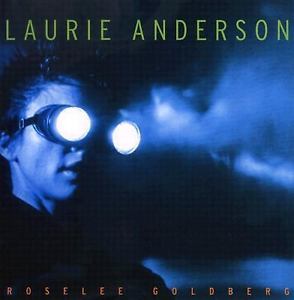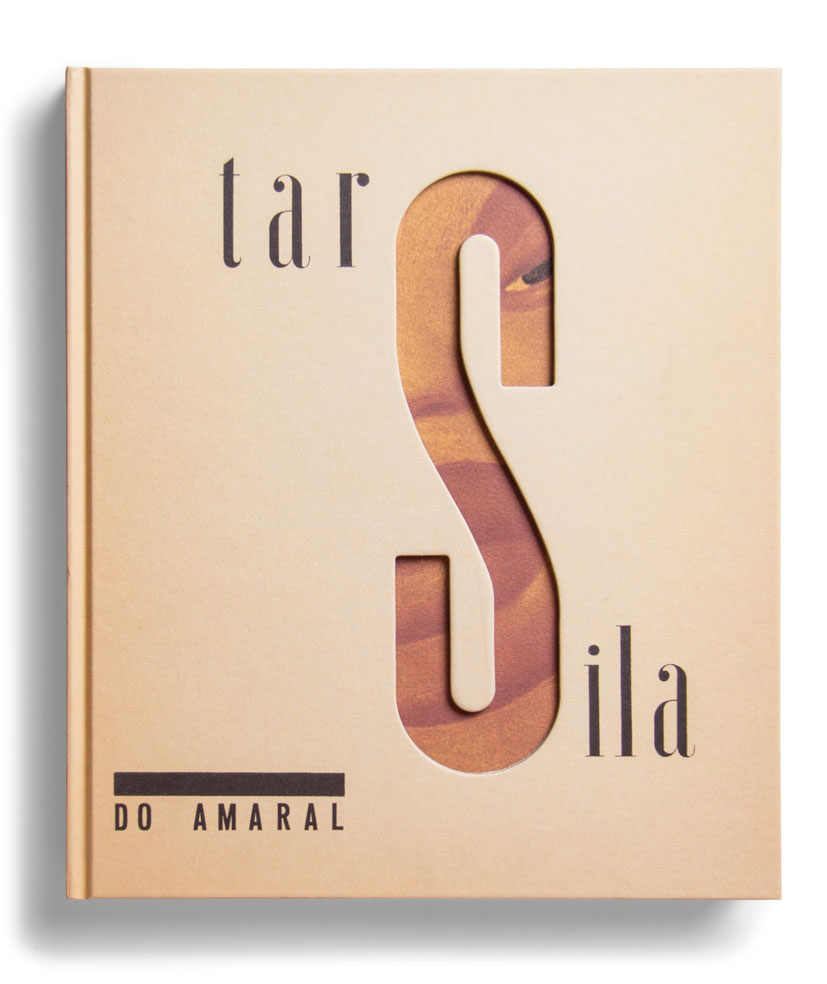RoseLee Goldberg: Laurie Anderson (2000)
Filed under book | Tags: · art, art criticism, avant-garde, music, music criticism, musical instruments, performance, performance art, storytelling, technology

“Laurie Anderson is one of the most acclaimed and innovative performance artists and musicians working today. The entire scope of her career is celebrated in this volume, from her early art works and performances in the 1970s, to her rise to prominence in the 1980s with her single O Superman, her portrait of the United States, and her breakthrough album Strange Angels; to her interactive Web site called The Green Room, a CD-ROM titled Puppet Motel, and her production Songs and Stories from Moby Dick, an electronic opera that is based on Herman Melville’s epic novel and includes new inventions, such as the Talking Stick.
With insightful text and more than 300 illustrations, author RoseLee Goldberg, a leading authority on performance art, explores aspects of Anderson’s work of the past three decades, illuminating Anderson’s creative process; her enduring interests in storytelling and in technology; her collaborations with such avant-garde figures as author William Burroughs, monologist Spalding Gray, and rock star Lou Reed; the social and political contexts that have shaped her art; and the critical and popular response it has received. In addition to surveying Anderson’s work chronologically, Goldberg devotes special sections of the book to Anderson’s inventions and body instruments, such as her Headlight Glasses and Screen Dress; her stage sets; her many violins, including the Tape Bow Violin and the Viophonograph; her scores; and her videos. The lyrics to many of Anderson’s songs are included, as are lengthy excerpts from many of her performances, stories, and other writings.”
Publisher Harry N. Abrams, New York, 2000
ISBN 0810935821
204 pages
Review: Eric P. Nash (NYT Books, 2000).
PDF (46 MB, no OCR)
Comment (0)Aleksandr Deineka (1899-1969): An Avant-Garde for the Proletariat (2011) [EN, ES]
Filed under catalogue | Tags: · art, avant-garde, painting, revolution, russia, socialist realism, soviet union

“This is the first exhibition and publication to present this outstanding figure of socialist realism – and, by extension, the historical period from which his work was borne – in a twofold context: the end of the avant-garde and the advent of Soviet socialist realism. It covers Deineka’s entire oeuvre, from his early paintings of the 1920s to the twilight of his career in the 1950s, when the dreamlike quality of his first works gave way to the harsh materiality of everyday life, the life in which the utopian ideals of socialism seemed to materialize. Combining Deineka’s graphic work, posters and contributions to illustrated magazines and books with his monumental paintings, this catalogue displays a variety of subjects: factories and enthusiastic masses, athletes and farmers, the ideal and idyllic image of Soviet life.”
With essays by Manuel Fontán del Junco, Christina Kiaer, Ekaterina Degot, Boris Groys, Fredric Jameson, Irina Leytes, and Alessandro De Magistris. Includes an extensive section with documents of the Russian avant-garde, Revolutionary Art and Socialist Realism (1913-35) and texts by and about Deineka (1918-64).
Publisher Fundación Juan March, Madrid, 2011
ISBN 9788470755927, 8470755927
440 pages
Exhibition
Publisher
WorldCat (EN)
Deineka: An Avant-Garde for the Proletariat (English, 30 MB)
Deineka: Una vanguardia para el proletariado (Spanish, 30 MB)
Tarsila do Amaral (2009) [EN, ES]
Filed under catalogue | Tags: · anthropophagy, art, art history, avant-garde, brazil, cubism, painting

“Tarsila do Amaral (1886-1973) is one of the major figures of the Latin American vanguard and the symbol of Brazilian Modernism. Exotic, sophisticated and cosmopolitan, she spent two intensive periods in Paris, where she completed what she called the ‘military service’ of Cubism and fed on European avant-garde currents, like a civilized anthropophagite. Upon returning to her country, the digestion of that banquet and her rediscovery of the colors and shapes of her childhood spent in the Brazilian interior would, around 1920, give rise to the most dazzling epoch of her painting.
This catalogue approaches the artist from the remote past of her country, supplemented by the works and writings of her contemporaries as well as essays by experts on her painting.”
Publisher Fundación Juan March, Madrid, and Editorial de Arte y Ciencia, Madrid, 2009
ISBN 9788470755613 (EN)
295 pages
English: PDF, PDF (14 MB), View online
Spanish: PDF, PDF (24 MB), View online

